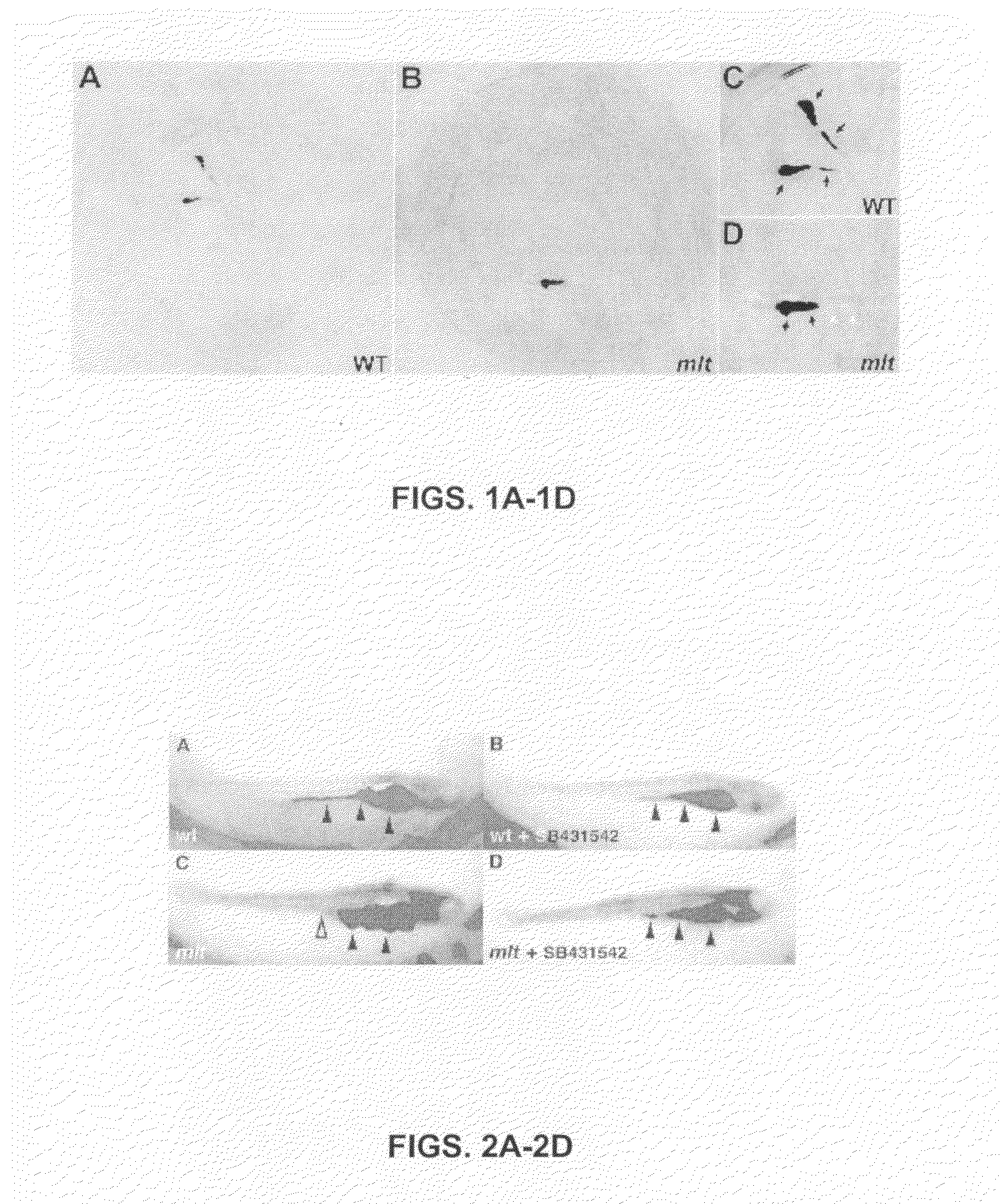High Through-Put Method of Screening Compounds for Pharmacological Activity
- Summary
- Abstract
- Description
- Claims
- Application Information
AI Technical Summary
Benefits of technology
Problems solved by technology
Method used
Image
Examples
example 1
[0097]Identifying Small Molecule Compounds that Inhibit Cancer Cell Invasion and / or Fibrosis.
[0098]To identify genes and pharmacological compounds that regulate cancer progression using the zebrafish, meltdown (mlt) larvae was used. Mlt is a recessive lethal mutation previously selected by mutagenesis screening that is displayed as an altered phenotype of intestinal architecture. The disruption in the zebrafish larva results in cystic expansion of the posterior intestine as a result of stromal invasion of nontransformed epithelial cells (Farber et al., 2001, supra).
[0099]In the present assays, mosaic zebrafish were generated in which homozygous mlt / mlt cells have replaced the native germline of wild type fish. 100% of the offspring derived from pair wise matings of such modified zebrafish are homozygous for the mlt mutation. Thus, all of the larvae placed in each well of the 96-well plate are mlt mutants, greatly enhancing the efficiency of each assay. Note that it is also possible ...
example 2
[0131]Identification of Small Molecule Compounds that Enhance Intestinal Motility.
[0132]Zebrafish sparse mutants (c-kit mutation) have delayed intestinal transit. This defect arises from a lack of intestinal pacemaker cells known as interstitial cells of cajal (ICC) (unpublished data). Delayed transit may be assayed through the persistence of ingested fluorescent microbeads in the intestine of sparse mutant larvae. However, sparse is a non-lethal mutation in homozygotes.
[0133]For this assay, 96 hpf viable sparse mutant larvae derived from matings of homozygous sparse / sparse adult fish are arrayed in 96 well plates. The larvae are bathed in fluorescently labeled microbeads (commercially available) for ˜8 hours. Because the sparse mutants do not expel the labeled beads, one of ordinary skill in the art practicing this invention can readily determine whether a compound has been administered to the mutant larvae that alters that phenotype—so that the fluorescent compounds begin to be ex...
example 3
[0134]High Through-Put Screening to Identify Seizure Inhibiting Compounds.
[0135]Based upon the finding that stereotypic and concentration-dependent seizures can be elicited by exposure to a common convulsant agent (pentylenetetrazole, PTZ) in a simple vertebrate system e.g. zebrafish larvae (Baraban et al., Neuroscience 131:759-768 (2005)), the methods described above were applied to demonstrate their effectiveness in high through-put screening for compounds to treat a disease affecting a different system, the CNS. However, the methods used were completely different from those described by Baraban et al., in that the zebrafish larvae were selected at a different stage of development, and the present invention would not have operated on the immobilized assays described therein, but the observed seizure activity permitted the principle to be applied to further confirm the breadth of the capability of the present invention.
[0136]The fish or more specifically, the larva are treated with...
PUM
| Property | Measurement | Unit |
|---|---|---|
| Fluorescence | aaaaa | aaaaa |
Abstract
Description
Claims
Application Information
 Login to View More
Login to View More - R&D
- Intellectual Property
- Life Sciences
- Materials
- Tech Scout
- Unparalleled Data Quality
- Higher Quality Content
- 60% Fewer Hallucinations
Browse by: Latest US Patents, China's latest patents, Technical Efficacy Thesaurus, Application Domain, Technology Topic, Popular Technical Reports.
© 2025 PatSnap. All rights reserved.Legal|Privacy policy|Modern Slavery Act Transparency Statement|Sitemap|About US| Contact US: help@patsnap.com

